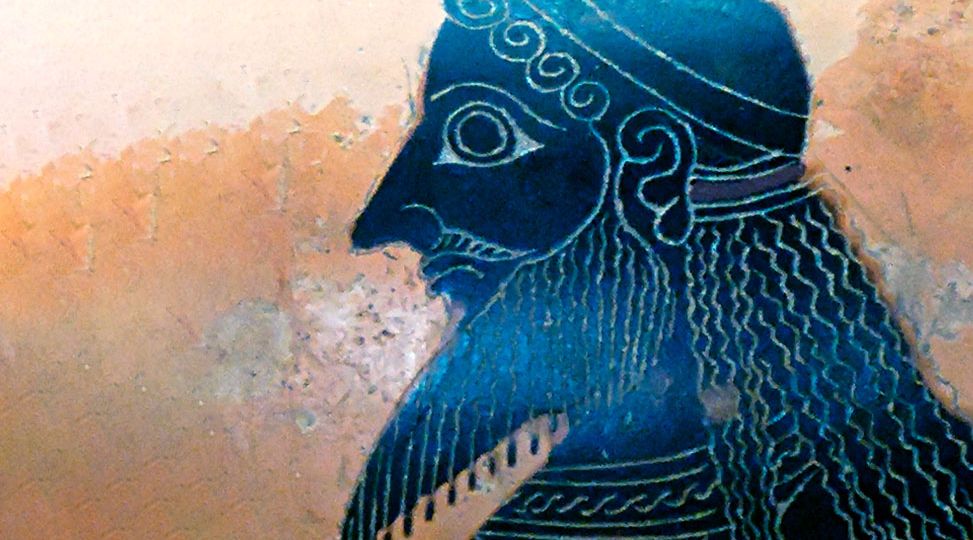
The Polytheistic Organization
Abstract
Bernard Neville, October 8, 2010
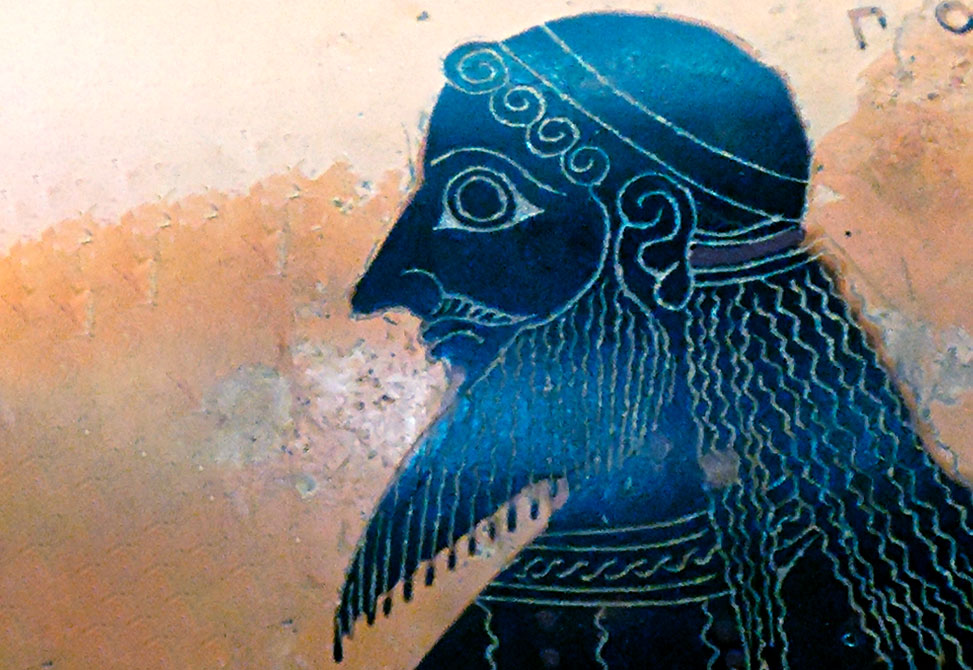
Archetype
The concept of archetype is central to Jung’s understanding of the universe and the place of human beings in it. In fact, those of us who take Jung seriously would argue that the concept of archetype is one of the most important ideas to have emerged in the twentieth century, an idea with enormous implications for the way we think about ourselves.
In his writing, Jung swings through a number of variations on the notion of archetype. At times he was careful to point out the distinction between the archetypes as such and the archetypal images through which we become aware of them. At times he seemed most interested in their physical manifestation, in instinct or pathology. At times he described them as our archaic heritage ― a ‘living system of reactions and aptitudes that determine the individual’s life in invisible ways’ (CW 8; 339). He argued that ‘they can only be explained by assuming them to be deposits of the constantly repeated experiences of humanity.’ (CW 7; 109) At other times he emphasized that they were not inherited habits, or even inherited ideas, but inherited possibilities of ideas and behavior. All of our ways of perceiving, thinking, feeling, valuing and behaving are shaped by particular possibilities.
In his various ways of describing archetype Jung sometimes wrote as though they are pre-existent, as though they are eternally there, outside of our time and space, existing independently of our consciousness, manifesting themselves in various ways in individual behavior and human history. Sometimes, however, he imagines them as evolving through human experience. More recently archetypal psychologists like Michael Conforti (2003) have argued that it makes most sense to think of archetypes as fields which predate the existence of matter, and out of which matter and form emerge. Others, like Anthony Stevens (2001, 2003), argue that the archetypal patterns in human behavior are the result of evolutionary adaptation. If we see these two ideas as contradictory it may say less about the nature of archetype than it does about the nature of our thinking.
What is important here is the notion that the universe we live in is patterned in specific ways, and that these patterns can be detected even in apparently trivial aspects of human experience, both individual and collective. Jung himself was not much interested in exploring the positive aspects of group behavior. His observation and experience of National Socialism made him suspicious of groups of any kind. He felt that his theory of personality type had no place in it for the application of his categories in the examination of organizational culture.
Nevertheless, Jung’s archetypal theory has proved extremely useful in the exploration of organizational culture. We find Jung-oriented commentators using notions like Shadow, Persona, Anima and inferior function when writing about organizations, not to mention a tendency to label organizational behavior after Dionysos, Apollo, Athena and the rest. I suggest that wherever we find particular patterns reiterated in individual or collective behavior we are dealing with archetype. I would add that the reiteration across time and across contexts of the patterns of behavior distinguished in Jung’s typology suggests that these patterns are grounded in archetype.
Our ancestors saw archetypal patterns as representing primal energies, which they personified as gods. James Hillman (1976) suggests that if we want to understand ourselves we should see through our behavior all the way to the god image and the god-story in which it is embedded. We need to experience these god stories the way our ancestors did, not just as interesting stories which we hear and remember and tell to our children, but grand narratives within which we live our lives.
Jung brought us the notion of inflation, a condition in which the individual is taken over by a complex, or a nation or culture is taken over by a particular archetypal energy. Such a notion would have held no surprise for the Greeks. It was obvious to them that falling in love, or falling into a rage, or becoming obsessed with our new-born children are not things we do but things which happen to us. For the Greeks it was clear that in such cases we are being taken over, physically and emotionally, by a god—by Eros or Ares or Demeter.
We may find inflations of all kinds in organizations, in workplaces, in the personalities of managers. When we listen to the rhetoric and observe the behavior of the leadership team in an organization or workplace, we may find both the wisdom which comes with embracing the perspective of a particular psychological complex — a particular god — and the pathology which comes with the neglect of one god or the excessive worship of another.
Thus the Greek pantheon can provide us with a language for talking about a wide range of distinct philosophies, value systems, energies, feeling states, habits of behavior and leadership styles as they can be observed in individuals and groups. It is a language which is not dominated by a single management philosophy or theory but welcomes contradictory perspectives. The gods are many, and if we follow the advice of the ancient Greeks we will be careful not to neglect any of them — and not to get too carried away in worshipping any single one of them.
In what follows I will outline sixteen patterns of behavior that I and my colleague, Tim Dalmau, have observed in organizations, groups or workplaces. Each of them can be associated with the personality and energy of a particular Greek god. Our categorization of sixteen distinctive organizational cultures was based on observation and experience. We were less interested in the ways organizations describe themselves than the values which appear to be lived out in their behavior. We discovered sixteen different narratives in which behavior in different organizations appears to be embedded and found that they paralleled the core myths of the classical Greek pantheon.
Classifying Cultures
There have been many attempts to design a classification system to distinguish organizational cultures. They all have to sacrifice complexity to some extent in order to develop neat dichotomies or polarities. We find mechanistic cultures contrasted with organismic cultures (Burns and Stalker 1961), power cultures distinguished from role cultures, task cultures and personal cultures (Handy 1976, 1979). Handy added a mythical dimension to his classification system attaching these four distinct cultures to the personalities of four Greek gods — Zeus, Apollo, Athena and Dionysus.
We find that cultures can be hierarchical or egalitarian, person-oriented or task-oriented, emotional or feeling-neutral, individualistic or communitarian, diffuse or specific, inner-directed or outer-directed (Trompenaars and Hampden-Turner, 1998); high context or low context, monochromic or polychronic (Hall 1981); concrete or abstract (D’Cruz and Steele 2000). Organizational cultures can be classified in terms of high or low power distance, and high or low uncertainty avoidance (Hofstede 1991). They can be labeled masculine or feminine, individualist or collectivist, long-term oriented or short-term oriented (Ibid).
All such classification systems are rational systems, based on dualistic distinctions, and hence have trouble with the complexities that arise when organizations appear to be both individualistic and collectivist, both person-oriented and task-oriented, depending on the context and who is observing them. A problem arises when we try to impose a rational template on a phenomenon which is irrational. In dealing with organizations we need to confront the fact that organizational behavior, even more than individual behavior, is shaped by myth and unconscious dynamics, rather than by rationality.
Jung’s personality theory offers us a rich language for categorizing organizational culture. We can talk about extraverted or introverted cultures, sensate or intuitive cultures, thinking or feeling cultures, perceiving or judging cultures, or combine all these polarities in descriptions of (for example) ENFP cultures or ISTJ cultures. Jung’s typology is rationally constructed like those above, but is based on polarities, not dualistic distinctions. It allows for the individual to be both introverted and extraverted, both intuitive and sensate. However, the use of instruments such as the MBTI® which force an either-or choice may result in inappropriately rigid interpretations of personality type. Jung was very aware of the limitations of rational, dualistic thinking, and much inclined to seek meaning in myth.
Our classification of organizational cultures according to the personalities of the Greek gods was never designed to match Jung’s typology. It is not a rational system, but is based on narrative and image. The gods are complex and full of contradictions. Yet these contradictions seem to fit within a coherent pattern in the personality and narrative of each god. Zeus is benign as well as punitive. Hermes is the friendliest of the gods yet constantly deceives us. Aphrodite draws us towards both pornography and transcendent beauty. Demeter nurtures and starves us.
What interests me here is the presence of parallels between Jung’s observations of personality type and the dozen or so gods who were at the centre of the classical Greeks’ understanding of motivation and behavior. While the choice of particular gods as images of organizational culture was not based on any rational classification, we find that Jung’s language of type reflects key differences between the personalities of the gods as revealed in their myths. The archetypal patterns which take imaginal shape in the personalities of the gods seem to be manifest also in the patterns which Jung distinguished in the personalities and pathologies of his clients.
We can, for instance, point to gods who are clearly introverted, such as Hestia, Hephaistos and Hera. On the other hand, some gods are readily categorized as extraverted: Zeus, Herakles and Aphrodite. Aphrodite is clearly sensate. Apollo is intuitive. Apollo has a thinking preference. Demeter is a feeling type. Not all of the gods are so easily categorized but with a minimal amount of pushing and pulling we can fit them into a template based on Jung’s theory of type.
The Gods Of Ancient Greece
Whatever the process by which the Greeks of the fifth century BC arrived at their official pantheon of twelve major gods, they gave European civilization a set of images that have been enormously powerful. The stone-age clan could find in the worship of the Earth-mother or the Thunder-god an adequate expression of its relationship to the universe. However, the universe in a sophisticated urban culture such as that of classical Greece is a bit more complicated than this. One of these complications is in people’s ability to reflect on their experience, so that the gods for the classical Greeks are images of psychological patterns as well as cosmic ones. They have remained so for us.
The Greeks knew they ought to have twelve key gods, like their Egyptian and Asian neighbors, but they could not quite agree on which twelve they should be. The identity of the twelve differed slightly from place to place. In our work in organizations we have settled on sixteen gods, omitting Poseidon (who is usually one of the twelve) and including Hades, Herakles, Prometheus and Eros (who are not). Both Dionysos and Hestia, who seem to share twelfth place, are included. There is no logical place to end a list like this and, having gone past the magic number of twelve, the next magic number of sixteen was as good a place to stop as any. Unfortunately, this means omitting not only Poseidon, but also Kronos, Hekate, Pan, and Persephone, not to mention the nymphs and satyrs and fates and furies, all of whom may be found to influence the culture of particular organizations.
Greek God Images In Organizations
An organization’s culture can be observed in its artifacts: its buildings, its documented policies, its structure, its rhetoric. It can be observed in the way its members talk to each other, the ideas and perspectives they share. It is manifest in the values and attitudes which drive it. It is grounded in the basic assumptions which its members make about life and society, assumptions which may rarely be articulated (See Lundberg 1985). Culture develops from everybody copying everybody copying everybody, and a great deal of this copying is unconscious and irrational. Indeed, groups are even more prone than individuals to live their lives within the unreflected taken-for-grantedness of a myth.
Each of the god images within the Greek pantheon represents a powerful inner pattern at the level of deep unconscious assumptions within a group. The Greek myths remain current and personally relevant for they each resonate with a particular understanding of our shared human experience. When we seek to re-tell these myths in the context of a particular organization we open ourselves up to the possibility of much intuitive understanding and insight.
The gods do not act alone. In any organization we will find a group of gods either collaborating or competing in the organization’s processes. Some gods naturally work together. Where we find Eros we are likely to find Aphrodite and Dionysos. Where we find Zeus we are likely to find Apollo. On the other hand, some gods are antagonistic to each other. Hera hates Herakles and Dionysos. Hera and Artemis have no time for Aphrodite. Hestia and Ares have nothing in common. Hermes tells us to worship all the gods, including himself. However, in most organizations there will be a group of gods worshipped, and another group neglected. Where an organization has been taken over by the energy of a single archetype, it is generally in trouble.
The god-images are all complex and multi-dimensional, and resist summary statement. Nevertheless, some such statement seems warranted here. How would we describe an organization that is given over to a particular god-energy, carried along by the myth of a particular god? The following summary is based in the first place on the personalities of the gods as represented in classical Greek mythology, and secondly on our experience of imposing this particular template on the organizations with which we have worked. More detailed descriptions of the gods and the ways their energies are manifested in particular organizations can be found in Neville and Dalmau (2008).
Extraverted Sensation – Aphrodite & Herakles
The Aphrodite Organization
An organization that focuses on beauty and pleasure, that seeks to be admired and desired
Aphrodite is the goddess of beauty and sensuality. She is overtly and unselfconsciously sexual. She believes in fun, in immediate gratification, in the ultimate power of beauty. She has none of Hera’s concern for respectability and social obligations. She is irresponsible and self-indulgent, careless of the consequences of her actions, inclined to be bitchy. She gets plenty of attention in popular culture, but she does not get much acknowledgment in organizations dominated by other gods.
There may be a relatively small number of organizations that are driven entirely by the pursuit of beauty, but it is a drive experienced by individuals in every organization. In writing a report, developing a product or a strategy, attacking a problem, conducting a meeting, they may, consciously or not, be seeking the most elegant and beautiful solution rather than the most efficient, useful or economical one. In most organizations they may have to keep this eccentricity secret; in the Aphrodite organization (in the arts, fashion or advertizing, for instance) they may be actually encouraged in such behavior.
In organizations dominated by Zeus and Apollo, sub-groups inflated with Aphrodite tend to be publicly ignored, treated as if they do not exist. Such groups may pay particular attention to their appearance, find opportunities for indulgent celebration, and strive to make the physical environment in which they work as pleasant and beautiful as possible. Invariably they will be found in the staff and service functions of the organization rather than line management functions.
Aphrodite is as often found in the company of her lover Ares as in that of her husband Hephaistos. Sex and violence appear to be pathologically drawn to each other. We find images of Aphrodite proliferating in sites of macho culture: motor sports, football teams, construction sites. (Of course, when we say something is pathological or immoral we are exercising judgment, something Aphrodite would never do. Judgments—either thinking judgments of feeling judgments—are left to other gods, like Apollo, Hera and Zeus.)
Unfortunately, there are not many workplaces where activity is driven by the pursuit of beauty, where having fun is as important as efficiency and productivity. Many of us are starved of grace and beauty in the places where we work.
The Herakles Organization
An organization that sees itself involved in an heroic struggle
Herakles was the result of coupling between Zeus and a human mother. His heroic struggles eventually gained him a place among the gods.
The organization that has a strong Herakles culture sees itself cast as a hero. It has a quest to fulfill, a mission to perform. There are giants to wrestle, dragons to slay, maidens to rescue, tyrants to overthrow, rivers to divert, mountains to flatten, forests to clear. There is a sense of having to do all this single-handedly. Leadership in such an organization is given to a powerful individual whom the members do their best to emulate. Organizational structures are minimal. The chief executive leads by example rather than by giving orders or by consultation. Subtleties, ethical, intellectual or operational, are not greatly respected. The organization is dominated by an individualistic macho ethos, which values the ability to crash through by sheer strength, to endure pain, to resist higher authority, to aim at the impossible. There is little sense of social obligation or responsibility. However, the hero can be extraordinarily generous. The hero (whether an individual or an organization) does what he does because he chooses to, not because of the directives or expectations of others.
Herakles is close to the father-god, Zeus. Within the corporation the authority of the executive is respected and unquestioned. However, outside the corporation authorities are likely to be regarded with contempt. Short-sighted and narrow-minded authorities are constantly getting in the way of the corporation’s right to do whatever it likes. The organization resists being pushed around. Since it recognizes no one’s right to tell it what to do and since it has little capacity for reflecting on the consequences of its actions, it can be randomly and unintentionally destructive. The life of Herakles is characterized by the inadvertent slaying of innocent people. It is also characterized by a constant battle against the various manifestations of the earth mother. In the contemporary corporation a pathological Herakles culture may be revealed in the reckless destruction of the natural environment.
The development and construction industries provide many examples of Herakles cultures. Corporations engaged in mining are also likely to have a strong Herakles aspect to their culture. Small corporations within this sector often live within a myth of Herakles as they battle for survival against the giants. Herakles cultures can also be found in activist organizations of all kinds.
Extraverted Intuition – Hermes & Athena
The Hermes Organization
An organization focused on communication, process and transition, and which abhors all regulation
If there was any god more popular in classical times than Aphrodite, it was Hermes, the god of travelers, shepherds, thieves, merchants, and scholars. He is a very slippery character, an opportunist without any respect for conventional morality, a trickster, a liar and a thief. He is elusive, unpredictable and mischievous. He is also very charming. The Greeks believed him to be friendly to mortals, but they were careful not to trust him too much.
In recent years Prometheus’ myth of progress has been replaced by Hermes’ myth of the marketplace, and Hermes, god of the marketplace, has taken a strong hold on our consciousness. This is manifested in the way we now look at business. The marketplace has become the dominant metaphor. Companies which once focused on the quality of their products have become more concerned with the variations in their share price. Seeming has become more important than being and doing. Doing deals is far more fun than manufacturing products or accumulating assets. When something threatens their reputation they are more likely to call in the spin doctors than focus on fixing the problem.
Many organizations in the advertising, marketing and sales industries have strong Hermes cultures, as we would expect. We are likely also to find Hermes cultures, appropriately enough, in the media and travel industries. Yet when a Hermes culture becomes dominant in manufacturing, education or agriculture, the results can be disastrous. The marketplace, through the voices of analysts and financial journalists, now demands of CEOs a responsiveness to the market’s short-term imperatives for return on capital. This can place the corporate strategist in some very significant dilemmas, balancing long-term good against the need to keep the marketplace hounds from the door.
On the positive side, Hermes subverts the conventionally accepted order of things, disrupts all our certainties, unties all our knots, and makes change possible. Organizations sometimes get stuck in repeating themselves, doing things the way they have always done them simply because this is the way they have always done them. They need Hermes’ gifts of flexibility, adaptability and imagination, his readiness to let go of what has been taken for granted, even his opportunism and persuasiveness, to initiate change. In a world where we are told ‘change is the only constant’ a Hermes consciousness is essential. But it must be balanced by the other gods or it will quickly bankrupt itself.
For the past two decades at least, political life has appeared to be dominated by Hermes personalities, and there is great pressure within institutions of all kinds to adopt Hermes culture. This is a source of great stress, as organizations traditionally dedicated to Demeter, Hera, Hephaistos or Apollo are expected to suddenly abandon their focus on care, service, crafting or research and become slick marketeers of these commodities.
The Athena Organization
An organization characterized by cooperation, the sharing of power, the manifestation of balanced and practical wisdom
Athene is the goddess of balance, of normality, of common sense. Unlike other gods who make our lives exciting, Athene represents our tendency to avoid extremes. She is a goddess with attributes which we are now inclined to stereotype as masculine. She is, for instance, a god of war. Not vehement, sword-wielding, blood-lusting warfare, waged for the violence and the glory of it (like Ares, the other Olympian war god), but cool, intelligent, calculating, strategic warfare, waged to defend one’s city and citizens. She is also a god of peace, and of the civilized living that comes with peace. She teaches us the arts and sciences, which form the basis of this civilization. She also teaches us that we must fight to defend them. She is the goddess of the democratic process. She has little interest in relationships, except insofar as they have strategic value.
Organizations dominated by an Athena consciousness believe in doing things well. They believe in participative decision-making. They value cooperation. Managers have a great deal of faith in consensus. The preferred way of developing strategies or dealing with problems is a collaborative approach that recognizes and utilizes people’s different kinds of expertise. Horizontal structures are preferred to vertical ones. Decisions regarding policy and practice are perceived as decisions of the organization as a whole rather than of the chief executive or ruling clique.
The preference for group-based decision-making comes from a sense that this is the best way of making decisions, not from any desire for intimacy. People in such organizations believe that decisions should be made coolly and sensibly, after full debate, with full attention to practical implications. Too much emotionality is frowned on. Women may be prominent and valued members of such organizations, but only in so far as the feminine perspective that they bring is compatible with the ethos of the organization. Women who wish to challenge the essentially masculist assumptions of the organization by approaching it from the perspective of Artemis or Demeter may not be welcome at all. Athena may represent the independent, resourceful, clear-sighted feminine, but she accepts the ground-rules laid down by Zeus. She does men’s work in a men’s world.
Athena is dominant in many academic institutions. We find her in many organizations with an avowedly feminist culture, sometimes, as in The Body Shop (Roddick), accompanied by Artemis.
Organizations dominated by the egalitarian Athena culture may experience a peculiar pathology when it comes to decision-making. There may be so much insistence on complete debate, so many committees to consult, so many people whose voices need to be heard, that it is impossible to make any decision at all. The chief executive may be forced to take on a Zeus role and make a decision that over-rides legitimate objections and leaves many people resentful. Organizations founded on a notion of rationality and collegiality, such as academic institutions, are particularly prone to this pathology, which weakens their ability to resist a takeover by Zeus or Hermes.
Extraverted Thinking – Zeus & Prometheus
The Zeus Organization
An organization based on centralized power
The archetypal pattern personified in Zeus is the pattern of power, the power which brings order to chaos, maintains itself brutally or benevolently, can both protect and punish and provides security as well as fear. Autocratic managers may embody the positive qualities of Zeus, in providing staff with the security of clear expectations and unambiguous rules, or they may embody his negative qualities in their suppression of dissent. The Zeus-dominated bureaucracy protects us from chaos. Human beings generally prefer order, even autocratic order, to chaos.
The Zeus-inflated manager believes that he (usually he) does not have to answer to anyone. He makes all the decisions. He punishes those who offend him and rewards those who please him. He bullies those who are slow to step into line. This is the nature of the Zeus organization, where the boss is everywhere present and his power is effectively absolute. He can act on impulse without fear of the consequences. He is not anybody’s agent, is beholden to nobody, makes the laws and sees that they are carried out. He surrounds himself with executives whose status comes from their closeness to him. All power comes from above, as do truth, justice, self-esteem and condemnation. It is difficult to escape the presence of the all-knowing, all-seeing, all-powerful one who hands out his bounty with one hand and hurls his thunderbolt with the other. Rewards are as unpredictable and arbitrary as punishments, for no one must think of deserving them.
Zeus organizations can be very efficient in producing goods and services, and at handling crisis situations. The Zeus culture may be the best culture for dealing with a major emergency. There is good reason why dictatorships generally emerge out of chaos. People are generally willing to exchange freedom for a guarantee of order and security. However, there are some things that Zeus is not very good at. He depends on Hera and Apollo to keep the system stable and functional.
The Prometheus Organization
An organization with a mission to save humanity through the application of technology
The image of Prometheus the Titan has been enormously significant in European consciousness. He is the creative mind. He is the god who created man (but not woman), who took humanity’s side against the will and wrath of Zeus. He is the hero who defied the patriarchy in the name of individual freedom, who brought light into our darkness. He is the savior who sacrificed himself for the sake of mankind, the benefactor who brought the gift of technology down from heaven, the teacher who showed us how to use our intelligence to take control of the world. He is the individual who proclaims his and our right to be an individual.
In the nineteenth and twentieth centuries, the capitalist version of the Promethean myth expressed the fantasy of achieving freedom from poverty and misery through the development and management of technology by powerful males. This has proved remarkably resilient, in spite of the fact that anyone who wants to look can see how our obsession with technology has brought us to a point where we may have damaged the planet irreversibly and put the future of the species at risk. Technology seems to have proved to be at least as effective an instrument of enslavement as it has been an instrument of emancipation. It has become increasingly clear that belief in the inevitability of progress has little evidence to support it. Yet the fantasy survives. Now, in the middle of what may be the last dying spasm of the industrial age, we are still being exhorted to focus on the technology which will save us. There has been a reorientation from low tech to high, but it is still technology which will make us free and rich and happy, and take us into the golden age.
Those who are stuck in Prometheus myth think that we can solve the social and ecological problems of the planet by being clever and developing our skills, and they fail to see that it is our reliance on technology which is the source of the problem. There are plenty of Promethean organizations around. They are designed like machines and are driven by technocrats. The well-oiled machine of the Promethean organization does not perceive any reason to take account of human needs and human diversity, because the system will function more efficiently if such differences are transcended. It wants its executives to be highly functioning individuals, with the specific competencies demanded by the particular task, and it wants them to fit into the structures provided. Promethean organizations like to build complex organizational structures, and accordingly are likely to be stable and enduring. Promethean organizations solve immediate problems through technical fixes, without much foresight about possible negative consequences of these technical fixes, for they have a positive view of the future and a long-term orientation. An important aspect of the Promethean culture is its mission to make things, to build, to control the chaos of the natural world. Any organization populated by engineers is likely to be caught up in the myth of Prometheus. The great industrial corporations which emerged in the nineteenth century and survived well into the twentieth were characterized by a strongly Promethean culture. However, by the beginning of the twenty-first century many of them have been taken over by gods more interested in short-term goals, such as Ares or Hermes.
Extraverted Feeling – Demeter & Ares
The Demeter Organization
An organization that mothers and nourishes its members
Jung found that the image of mother as container is universal in human experience. When he looked to mythology and religious belief he could find stories of the Mother Goddess which matched the observations that he and Freud had made about our infantile attachment to mother and our conflicting needs to escape from mother’s embrace and remain in it.
There is clearly a pattern in human affairs which we call mothering, and Demeter personifies it. She gives birth, she suckles, she provides, she is anxious for her child, she grieves, she gives her child the love and support necessary for growth. This is a psychological pattern as well as a biological one, and men as well as women share in it. Organizations and workplaces with strong Demeter values take mothering seriously. Central to their image of themselves is their task of providing a safe and supportive environment for their members or employees. They take responsibility for the care of their employees, exercising the power of the carer and nourisher. Employees are content to be dependent, as in the stereotypical image of the Japanese corporation, or in small community organizations where a powerful woman is matriarch.
Organizations inflated with Demeter energy become very safe places for those who value safety and predictability. Uncertainty is generally avoided. However, there is a significant price to be paid. One large corporation with whom we work a great deal is often described in the following terms ‘We may resent the company, but you have to admit it does look after us.’ This company offers its employees an extremely generous health plan, more than ample relocation expenses, strong family support systems for expatriates on assignment. It also has a history of negotiating quite satisfactory deals with unions in claims cases. These things do not go unnoticed by the employees and it is true that, when questioned, they will (far more often than not) speak of being cared for by the organization. But the pathology of Demeter is a smothering dependency, and this in turn breeds passive aggressive responses — even outright irrational rage. Demeter feels the utmost dismay and bewilderment when things get to this stage, and cannot understand how her children whom she has nurtured and protected can be so irrationally ungrateful. In this organization, it is not unusual for senior executives to experience this dismay and bewilderment as they ‘cop’ the resentment and anger from their workforce that they have genuinely sought to nurture and protect.
The Ares Organization
An organization in which energy is expressed through activity
Ares was not a particularly popular god among the Greeks. As a war-god, Ares represents battle-fury, blood-lust, the exhilaration of conflict and conquest. Most Greeks preferred to give their devotion to Athena, who personified intelligent, strategic warfare.
Ares is recognized easily enough in his negative aspect. The centuries are strewn with the consequences of Ares-pathology, both personal and tribal, and we have good reason to be suspicious of him. However, Ares has a significant place in our organizations.
Ares is a much simpler god than most of the others. He does not have any of the complexity of Athena, Apollo or Artemis. The stories about him indicate that he is emotionally immature and not very smart. However, we would be wrong to over-simplify him by identifying him solely with the pathology of warfare. The positive side of Ares must not be overlooked. Ares is the god of energy, of vehemence, of conflict, of activism, of challenge, of fire in the belly and fire in the eyes. When he gets too carried away he can be enormously destructive. He may be emotionally immature and inclined to act without thinking; yet we cannot live a human life without him. We must honor him as we do the other gods. Without him we have no passion. He shares with Demeter both her extraversion and her feeling, but feeling in Ares and Demeter is expressed in very different ways. Where Demeter’s energy is expressed in moving towards other, Ares moves against them.
Some organizations are completely dominated by Ares. They operate within a macho ideology in which conflict is relished for its own sake, any sign of subtlety or sensitivity is viewed with suspicion or contempt and relationships are entirely competitive. People enjoy kicking each other around the office, and don’t necessarily do it with malice. The ‘manly’ virtues of toughness and courage are extolled; any sort of softness is despised. The organization’s heroes are those who crash through obstacles rather than negotiate their way around them.
The Ares organization often has the atmosphere of the men’s locker room, and indeed the culture of sports clubs is often dominated by Ares. Military organizations will have an Ares culture, as will organizations dedicated to activism — political, environmental or social. Sales and marketing are areas where Ares energy may be prominent, for this god reveals himself in the ethos of competition. Women are not necessarily excluded from Ares organizations and many women enjoy working in an Ares culture. However, people who lack resilience may be severely damaged by it if they have no escape.
Like the Demeter or Eros culture, Ares culture is affective. There is no shame in expressing emotions, but the emotions expressed are very different from those of Demeter or Eros. It is also diffuse; there is not much concern to distinguish task from task, role from role, work from play, thinking from feeling or public space from private space as is the case in an Apollo organization. All seem to be blended in passionate action. The Ares energy in an organization is oriented towards immediate experience. If the organization does have a long-term orientation, it gets it from one of the other gods, probably Zeus or Prometheus.
Introverted Sensation – Hephaistos & Hera
The Hephaistos Organization
An organization devoted to the values of work, skill and craft excellence
Hephaistos is the only god who works. He is the divine blacksmith, the god of craftwork. His status as a god rose and fell with political and economic conditions in ancient times, as in our own. He is represented by Homer as a crippled and comical god of metal-working. His role as husband to Aphrodite shows how deeply he is obsessed with beauty, and the myths reveal how little reward he gets for his devotion. Hephaistos is the ugly god, who creates beauty through pain and tedium. He is the god who drives the dancer or gymnast or musician or sculptor or athlete to craft something beautiful through the aches and pains of practice and performance, and to bear the calluses and other physical deformities that are the price of this obsession.
Hephaistos is sometimes found with his wife, Aphrodite, but more often with Athena. He also has a lot in common with Prometheus, in spite of the injuries he inflicts on him. By disposition he is something of a loner, so he needs the influence of his mother, Hera], to maintain the bonds between people in an organization. When he is found working for Zeus, the combination can be enormously efficient and productive, but also potentially explosive. Hephaistos cultures thrive in professions like nursing and teaching, where many people are devoted to their craft, resent the fact that society does not adequately value what they do, think that problems can be solved by simply working harder, complain about their work, yet keep doing it. Where industries depend on dedicated craftsmanship they are centres of Hephaistos energy. The main threat to a Hephaistos culture at present seems to come from Hermes, the god of the marketplace. Organizations which once prided themselves on their ability to build beautiful bridges, produce beautiful goods or provide beautiful services, and which identified themselves with the excellence of their crafting, are under pressure to treat their products or services as commodities whose only value is their market value.
The Hera Organization
An organization that demands great commitment from its members, in which the members give organizational loyalty precedence over their individual needs
Hera, for the classical Greeks, was the Queen who shared in the power of King Zeus, the Wife who remained loyally in the background while the divine Husband attended to the affairs of the universe. ‘Lady’ is a fitting title for her. It denotes her dignity and the honor due to her as queen of the gods. In the Greek imagination, she represents social stability. Homer and the other poets depict her as the god of marriage and the family, the god of all those familial and social bonds and shared expectations which keep a society from exploding into fragments.
The Hera organization is inward looking. It does not look to sources outside of itself to establish its values and priorities. It is content, if need be, to be unfashionable. The typical Hera organization is the family company, where the image of the family shapes the way the organization thinks and talks about itself. New members of the organization, if they are not already members of the family, are adopted into it, and if they ‘fit in’ are likely to stay with the organization for many years. There is an expectation that members socialize with each other. The company organizes family picnics and other outings. What makes the company special is the bonding that occurs within it. Loyalty to the organization is highly valued. Disloyalty to the organization is the worst of crimes. The company reciprocates the loyalty of its employees. Loyalty to employees may actually be more important than profit, and inefficient and unproductive (but loyal) employees may be retained by the company because to sack them would be immoral. In some Hera organizations, especially in family-oriented cultures, it would be regarded as immoral to hire a competent stranger rather than an incompetent family member.
Hera abhors change. She attaches no value to creativity or personal growth. Her priorities are responsibility, loyalty, respect, commitment, honor, stability, dignity. She persecutes the gods and heroes (Dionysos, Herakles, Jason) who threaten to disturb this stability by standing up for individual rights and ambitions.
For employees who are immersed in a Hera culture the company commands complete loyalty. They will happily work long hours for little or no remuneration rather than let the company down. There is no place in Hera’s world for individuals who give priority to their own satisfaction and personal fulfillment. Every member of the family must put commitment and loyalty to the company ahead of personal whims and satisfactions. Hera loves pointing this out to people. For Hera, the notion of individual growth (Dionysos) is as meaningless as the notion of the individual struggle (Herakles). In a Hera organization the individual only has identity, rights and status as a member of the family.
The employee who knows how to ‘fit in’ may flourish in the Hera style of company, because fitting in’ is what it is about. He will treat senior members of the ‘family’ with respect. She will not criticize the company to outsiders. He will appreciate that there is a ‘proper’ way of doing things. If she has any ideas that challenge the established way of doing things she will be wise to keep quiet about it.
Introverted Intuition – Hestia & Artemis
The Hestia Organization
An organization characterized by quiet, focused, centered and receptive activity in the service of others
Hestia is a fire-god, like Hephaistos and Prometheus, but the fire which she personifies is the domestic fire. She dwelt in the hearth which was the focus of each home, and in the communal fire which was the focus of each village or city.
Hestia is the centre of things. She is the centre of the individual, the centre of the family, the centre of the city, the centre of the world. She represents the place of stillness from which we come and to which we go, the focus towards which everyone faces, the point around which everything revolves. She does not enter into the squabbles of the gods, but sits quietly and works at her weaving. She is quiet and self-effacing, but demands considerable honor. It was to Hestia that the Greeks said ‘grace’ before and after their meals.
There are societies whose notions of proper behavior give Hestia a central place, where ‘just sitting’ is regarded as a legitimate activity. Obviously, mainstream Western society is not one of them. There in not much value placed on introversion, on stopping to rest in what is essential. Things have been falling apart for so long that there is little sense of a focal point around which everyone is happy to gather from time to time. Yet Hestia, like the other gods, represents both an individual and a collective need. Where she is present in a workplace she gives employees the sense of containment they yearn for.
Some organizations deliberately include Hestia in their processes by providing a space for meditation. Monastic institutions are an obvious example, for Hestia is at the very centre of their traditional culture. In the mediaeval monastery the monks vowed not only to submit to the rules of the order but to spend their lives in the specific monastery.
In an organization dominated by a Hestia culture there is no great anxiety to do things, no frantic activity. Too much excitement is frowned on. People like to take things quietly, concentrating on what is essential and avoiding anything that might distract them from it. The Hestia organization is ‘home’ for its members. The culture is both introverted and collectivist. In such a culture people look inward rather than outward for the justification of their existence, for the organization contains its meaning within itself, and does not have to seek it in the outside world. The focused community is more important than the individual members of it. There is not much value placed on personal growth or individual potential. In the Hestia organization people are not expected to seek power, and when they do have leadership roles thrust upon them they take them on as a service to the community. Often the most influential people in the organization are not those who have formal authority but those who most represent the focus of the organization. There is not much interest in management structures, or in the complications of participative decision-making. The ideal leader or executive group is so closely in touch with what is of the essence of the organization’s meaning and purpose that the correct decisions present themselves simply and unambiguously, without the need for consultation. In Hall’s terms, it is a high context culture. There is no need to constantly spell out the organization’s values and processes, as these are taken for granted, and communicated more through imitation, rhythm and narrative than through memos.
Hestia organizations have their own pathology. Dwelling in the safe container of a Hestia culture can lead to complacency and inertia. Energy and change come from other gods.
The Artemis Organization
An organization that focuses on achieving harmony with nature, an environment in which the affirmation and protection of ‘feminine’ values is privileged
Artemis, or Diana as the Romans called her, is the goddess of sisterhood. She is the virgin goddess of the woods and mountains, the goddess of the moon, a goddess who is both a hunter and a protector of animals. She is surrounded always by a band of nymphs with whom she enjoys her freedom from any relationship or obligation to men. She has neither the need nor the desire to make herself pleasing to men or to give them power. As goddess of wild animals she shares their natural grace, their ability to live in harmony with nature and their fierceness. As goddess of childbirth she has a special role in the protection of children. As a nature-goddess she is clearly distinguished from Demeter, as the virgin forest is distinguished from the nurturing earth. An Artemis culture is mostly found in feminist organizations, in organizations devoted to the protection of the vulnerable, especially children and animals, and in organizations focused on environmental issues.
An Artemis organization is based on an ideal of companionship rather than hierarchy, natural rhythms rather than abstract order. It values its difference, sees itself not only as special, but as constantly under threat from an outside world which would destroy it. The bonds between people are based as much on the sharing of an ideology as on intimacy. Leaders of such an organization are expected to be passionate about their mission, and they want their colleagues to share their passion. They don’t have much respect for formal management structures, and value intuition more than logic. They are inward looking, assured in their values.
The values of Artemis, the heroic feminine (she is associated with the Amazons), provide an essential counterbalance to the images of the masculine hero which have played a dominant part in Western culture. We are taught that heroes are fighters, overcome obstacles, escape from captivity, kill monsters, conquer evil, are pathologically competitive, tame the wilderness. It can be argued that our institutions have been suffering from a hero-pathology for some time. When we talk of progress in terms of mastery, achievement and success we are caught in this hero fantasy. Artemis brings us a very different vision of priorities: to develop a sense of community, a love of wilderness, ecological sensitivity and a respect for non-human creatures.
Artemis exercises her influence over her disciples through personal power. She is not dependent on roles and structures, but on a sort of animal bonding which is sometimes called charisma. Leaders who have this power should recognize it as a gift, but a dangerous one. It can help them immeasurably in the work, if they can acknowledge it without embarrassment. It can also enable them to do great harm, if they refuse to acknowledge it or if they identify with it too completely. Unfortunately, this power invites a particular pathology, for Zeus has been known to disguise himself as Artemis in order to rape her followers, as in the myth of Callisto.
The organization in which Artemis energy is dominant places great stress on ideological purity, and gives its members status on the basis of their adherence to the official ideology. It also ruthlessly expels those who are not sufficiently pure. The bonds between people, which are very important in such an organization, are based on the sharing of an ideology rather than on intimacy. People in such an organization are expected to be passionate about its mission, which is generally concerned with the protection of the fragile, the natural or the oppressed. The Artemis organization tries to live in harmony with the natural order rather than exploit it. There is often an attempt to do away with formal management structures in order to engage in more ‘organic’ decision-making. Intuition is highly valued, and there is some distrust of conventional structures. Even the power-sharing structures of Athena’s participative democracy may be regarded as oppressive. People are expected to know what to do (and know what other people are talking about) without having it spelled out. Artemis, Mistress of the Beasts, is manifest in organizations whose structures imitate the organic and symbiotic relationships of the natural world rather than the abstract relationships of the controlled or manufactured world.
Introverted Thinking – Apollo & Hades
The Apollo Organization
A rationally structured organization that seeks clarity, understanding and meaning in all its activities
Apollo is the eldest son of Zeus, the twin sister of Artemis, the symbol of what it meant to be Greek and civilized: art, music, poetry, science, respect for law, athletic prowess, a sense of moderation. He is, besides, the god of prophecy and healing. However, the myth of Apollo shows him to be very inept when it comes to relationships.
Apollo establishes order and the rule of law. Not autocratic do-it-because-I-say-so law (which is the law of Zeus), not do-it-because-I-love-you law (which is the law of Demeter) but rational law, based on a reasoned estimation of what constitutes good and bad behavior. He is the god who gives people the capacity to think clearly, to understand how the world works, to find meaning, to organize their lives in an ordered way. He demands that we seek moderation in all things and look at the world in a detached and reasonable way.
Executives who are sensitive to Apollo values will place a high value on a rational approach to their work. Individual whims and impulsive decision-making are strongly discouraged and emotional outbursts are looked on with distaste. It is assumed that all problems can be solved and all crises dealt with through the application of cool intelligence. People are expected to behave rationally and there is some surprise when they do not. There is an assumption that if matters are clearly explained to people, they will understand and act on that understanding.
Obviously there are some settings where such characteristics are to be greatly valued: in the planning and conduct of highly specialized and technical operations such as space missions, for example. But as with all the gods, problems arise when the organization becomes inflated with one archetype. The pathology of Apollo emerges in a tendency to dogmatism and rigidity. Once Apollo-inflated managers see the way things are, they have little tolerance for those who cannot. They want things to be obvious, and have little patience with ambiguity and illusion. They are inclined to insist that the people accept their assessment of a situation, because its reasonableness is perfectly clear to them and those who can’t see this must be stupid or bloody-minded. Apollo’s pathology also emerges in his hostility to women, whom he marginalizes as trivial, intuitive, emotional, sensual and irrational. In mythology, Apollo appears to be unable to have any sort of satisfactory relationship with a female — goddess, nymph or mortal — except with his mother and sister.
Academic institutions have traditionally been sites of Apollo culture, or have at least imagined themselves to be so. However, in recent decades other gods have largely taken over these institutions, Firstly Prometheus became dominant, as the focus of university teaching moved from understanding to skills. More recently, Hermes has become the favorite god, as these institutions have become obsessed with the marketability of the skills they teach, and have begun to treat education as a commodity to be bought and sold.
The Hades Organization
An organization characterized by extreme indifference and apathy; an organization from which life has departed
Homer says that when the gods had won their battle with the Giants and Titans for control of the universe, Zeus and his two older brothers divided up the world between them by casting lots. Zeus won and got the sky for his kingdom, Poseidon got the sea and Hades won the Underworld. They decided that the earth could be shared between the three of them. So Hades ruled in the realm of the dead, and stayed there except for a brief excursion to the living world, when he abducted Persephone, goddess of Spring. He has no interest in the upper world, and humans do not waste time building temples to worship him. He can do nothing for them now, and he will get them in the end no matter what they do.
Hades, which is the name of the place as well as the name of the god, is a fit image for some organizations. The organization dominated by Hades is not much interested in what is going on in the outer world but focuses on its own processes. We are most likely to recognize Hades in organizations where these processes are pathological. Such organizations are inhabited by lost souls, who lead a flavorless existence in a place without life or light. They make no attempt to escape for they do not have the energy, and escape appears impossible in any case. They have no power over their situation, nor is there any point in seeking it. They go through the motions, but without hope, purpose or feeling. Power in the organization is held by someone remote, cold, detached and invisible. Life in such a Hades organization is dreary and mechanical, without the prick of ambition or the joy of social intercourse. It makes no connection with the outer world. And it goes on forever.
An organization that is dying is likely to be dominated by a Hades culture. There may be a few Giants and Titans who suffer significant tortures, who rage against the dying of the light, but most of the inhabitants accept their fate without much protest. The loss of morale, the loss of the will to fight, is one of the first symptoms of the condition. Occasionally a hero may arrive, create a stir and leave, without changing the condition of the shadowy beings who continue to go about their mechanical tasks without hope of change.
It’s hard to say anything nice about Hades. However, he is not evil, merely ruthless in doing what he does. We are inclined to close our minds to death, and spend our lives avoiding it. However, death is integral to life. Everything in nature must die to be born again. Our cells our constantly dying and being replaced, otherwise our growth would be cancerous and we would cease to exist. Organizations stay alive in the same way. They cannot continually become new without continually letting go of what they are. This generally requires the organization’s thinkers to be strong enough to overcome the resistance of those whose feelings are entangled in the organization’s past and those whose attention is focused on living up to the expectations of the outer world Sometimes a whole organization has to go through a death process so that it can regenerate and start anew. Greeks understood that life and death were two sides of the same coin, for they often identified Hades, the god of death, with Dionysos, the god of life.
Introverted Feeling – Dionysos & Eros
The Dionysos Organization
An organization that values growth, emotional excitement, spiritual experience, and rewards creativity and spontaneity
The worship of Dionysos seems to have been imported into Greece from Asia. The authorities found his worship somewhat unsettling and did not at first approve of it. Here was a god to be worshipped through mystical rites, whose followers sought ecstatic communion with him, who ran enthusiastically into the mountains to give themselves over to madness and orgiastic celebrations. Eventually, however, the worship of Dionysos was incorporated into the state cults; the god of license and chaos was worshipped side by side with Apollo, god of order and moderation. In particular, the development of the theatre came under his sponsorship, so that the exploration of the most intense human experience was pursued through a sophisticated and highly structured art form.
The authorities are still suspicious of Dionysos, and acknowledge him very reluctantly. For one thing, Dionysos has no respect for authority and no regard for social expectations. He is the god of growth and go-with-the-flow and do-my-own-thing. He is the god of the adrenaline charge, the god of tragedy, of feeling, of play, of suffering, of exhilaration, of charisma, of performance, of ecstasy, of newness, of freedom.
It is hardly necessary to point out that there is not much ecstasy apparent in most organizations. Dionysos would have us dance, sing, perform, be creative and spontaneous, experience the animal flow of life, be utterly engaged in what we are doing, experience both fun and freedom ― but there is little time for such things in most workplaces. One fruit of this neglect is apathy, the absence of feeling. (Hades as the counterpoint to Dionysos.) Another is the uncontrollable explosion of feeling whose expression has been frustrated.
In the Dionysian organization, each individual has the opportunity to set his or her goals, to make his or her own choices, to create his or her own environment. Life in such an organization is a continuing, flowing process, where experience constantly enriches the individual. It is an organismic, individualistic organization, where people resist any notion of regulating behavior or delineating roles and responsibilities the way an Apollo organization does. When a large organization dominated by Apollo-values takes over a small Dionysos organization (a common enough scenario) there is immediate and enduring friction. The new administration conducts its business by a proliferation of procedures such as memos, reports, meetings, regulations, job specifications, time-lines and performance audits. This is intolerable for those who have been immersed in a Dionysian culture. They believe they know what to do without wasting time on such nonsense, and will as likely as not find their satisfaction in subverting or sabotaging it.
Organizations devoted to the arts and performance, especially small ones, are often dominated by a Dionysian culture. It is much more difficult for a Dionysian culture to survive as the dominant culture in a large organization. Dionysian cultures tend to fragment when they get beyond a certain size. On the other hand the Dionysian culture is commonly strong in particular sub-groups within a large, hierarchical organization. Religious organizations are sometimes Dionysian, as are rock bands, self-help and support groups and fringe political organizations.
The Eros Organization
An organization that focuses on intimacy and community, in which people can express their need to love and be loved
The power of Eros is felt by humans and gods alike, in their propensity to fall obsessively in love. It is felt in both the delight and the anguish of intimacy. Eros is singularly the god of the drive to union, of relationship, and of the creativity which is generated by relationship. The Greeks of classical times imagined Eros as an adolescent boy, for their experience of love included more than the simple drive to union. Eros, as they imagined him, was unpredictable and irresponsible and destructive as well as delightful and creative. In imagining him in this way, they did not diminish his power, for Eros, when he chooses to, can control even Zeus.
In the organization dominated by Eros, the highest value is intimacy. The ideal emotional climate is positive, supportive, trusting, free of risk. Notions of hierarchy have no place in Eros’ value system. What makes it a great place to be is the quality of the relationships between colleagues or co-workers. In its purest form the Eros organization has a structure which is entirely horizontal. Notions of hierarchy, or even of authority, have no place in its ideology. Nor have notions of role. What holds the organization together is the genuineness of the relationships between its members. The organization may have a sense of common purpose, may be productive in many ways, may have established ways of going about its work, but these are secondary to the satisfactions of relationship. People think more in terms of their relationships with the people, rather than their responsibility to the organization. Community is an end in itself.
In the Eros organization, good communication between members is seen to be the key to effectiveness, and good communication is obviously the product of good relationships. It is love which makes the organization go round.
Eros is dominant in many community organizations, but Eros-dominated organizations tend to have short life. The tendency of Eros organizations to assume that if we love each other everything else will look after itself, often leads to problems, even problems in loving. Eros pathology readily appears when Eros is the only god being honored. If intimacy and openness are good, we might suppose that more intimacy and openness are better, and that still more openness and intimacy are better still. However, experience of closeness is not always as unambiguously positive as this. Sometimes, relationship maintains its intensity while reversing its meaning, and the experiment of community ends in bitterness. Or people can get so caught up in with relating to each other that they forget that their purpose in being together is to produce an outcome. Unless Eros is accompanied by more responsible gods like Hera and Apollo, he may become destructive.
Conclusion
Each of the gods has his or her special gifts to give. Each represents a perspective on life, as well as a different energy for dealing with it. Each appears differently in the personalities of managers and in their ways approaching their tasks. Each is present in her or his distinctive form in the truths we adhere to, in the instincts which drive us and the visions which draw us. Zeus tells us to respect rightful authority; Apollo tells us to act rationally; Hera tells us to fulfill our social obligations; Aphrodite tell us to pursue beauty; Artemis demands that we live in harmony with Nature; Hephaistos tells us that work is honorable; Eros insists that we love one another; Dionysos challenges us to become fully ourselves; Athena tells us to keep things in balance; Prometheus requires us to use our intelligence to make a better world; Ares wants us approach our tasks with passion; Hestia gently suggests that we stay centered, not get fussed, and focus on what is essential. Hades tells us that death is part of life. Hermes tells us to be flexible and to do whatever we can get away with. All of them have their Shadow. They all have their pathology. Sometimes the gods work together in our organizations. Sometimes they oppose each other. In our current disputes about the aims and processes of our organizations, the ancient and immortal gods are still involved in their old alliances and arguments.
While we must honor them all, we are unlikely to honor them all equally. We each have particular gods which shape our personality, our values and our perceptions. And while there is no single god who can claim organizational life as his or her personal sphere of influence, some of them may have a greater claim on it than others. However, we run an awful risk if we give all our devotion to our favorite god and neglect the others. We may like to see the eternally squabbling gods simply as colorful images, and their worship simply a useful metaphor to help us explore a multi-dimensional approach to our work in organizations. On the other hand we may wish to take them more seriously, to acknowledge that the Greeks, like other polytheistic cultures, knew something about cosmology and psychology which we have forgotten. However we may think about them, we neglect them at our peril.
References
Briggs Myers, I. and P. B. Myers. (1995). Gifts differing: Understanding personality type. Mountain View CA: CPP.
Burns, T. and G. Stalker. (1961). The management of innovation. London: Tavistock.
Conforti, M. (2003). Field, form and fate: Patterns in mind, nature, and psyche. Dallas TX: Spring Publications.
Hall E.T. (1976). Beyond culture. New York: Anchor Books.
(1984). The dance of life. New York: Anchor Books.
Handy, C. (1976). Understanding organizations. Penguin Books.
(1979). The gods of management. Penguin Books.
Hillman, J. (1977). Revisioning psychology. New York: Harper and Row.
Hillman, J. (1983). Archetypal psychology. Dallas: Spring Publications.
Hofstede, G. (1980). Culture’s consequences: International differences in work-related values. Beverley Hills CA: Sage.
Hofstede, G. (1991). Cultures and organizations: Software of the mind. New York: McGraw Hill.
Jung, C. J. (1953-63). Collected works. Princeton Univerity Press.
Lundberg, C. C. (1985). On the feasibility of cultural interventions in organizations. In P. J. Frost, L. F. Moore, M. R. Louis, C. C.Lundberg and J.
Martin, Organizational culture. Beverley Hills CA: Sage.
Neville, B. and Dalmau, T. (2008). Olympus Inc: intervening for cultural change in organizations. Greensborough VIC: Flat Chest Press.
Stevens, A. (2001). Ariadne’s clue: A guide to the symbols of humankind. Princeton University Press.
(2003). Archetype revisited: An updated natural history of the self. Toronto: Inner City Books.
Trompenaars, F. & C. Hampden-Turner. (1998). Riding the waves of culture: Understanding diversity in global business. New York: McGraw-Hill.



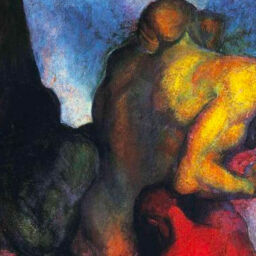
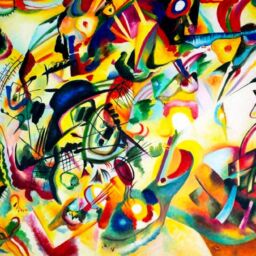

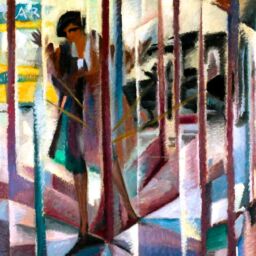
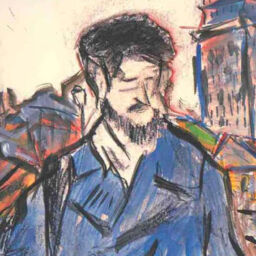
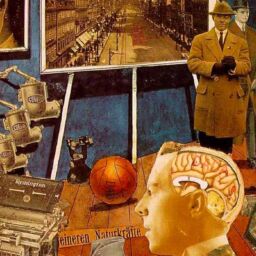

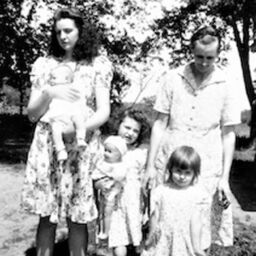
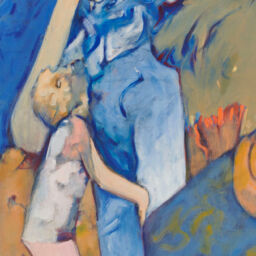
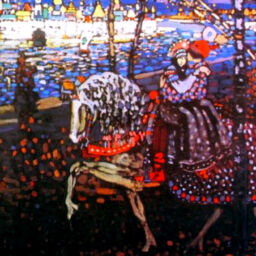


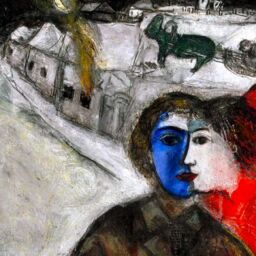


I am extremely excited about the debut of Personality Type in Depth. This publication exudes quality, superior graphics, great style, as well as depth and significance of the articles. It will provide hours of pleasure and in-depth learning. I know how much work it is to put together a publication of such quality. It is a fresh wind across the type community. I congratulate Type Resources and all the great people who are producing it. It deserves the solid support of all of us who love type.